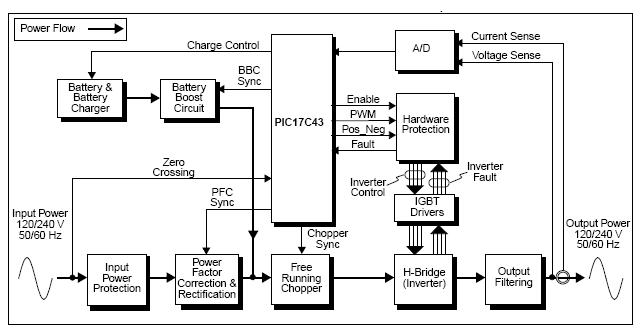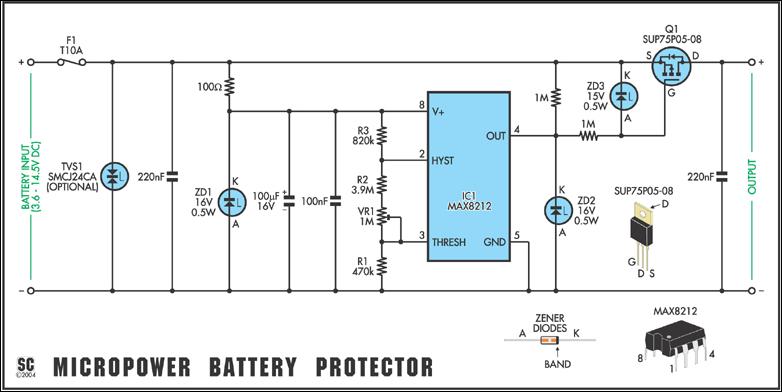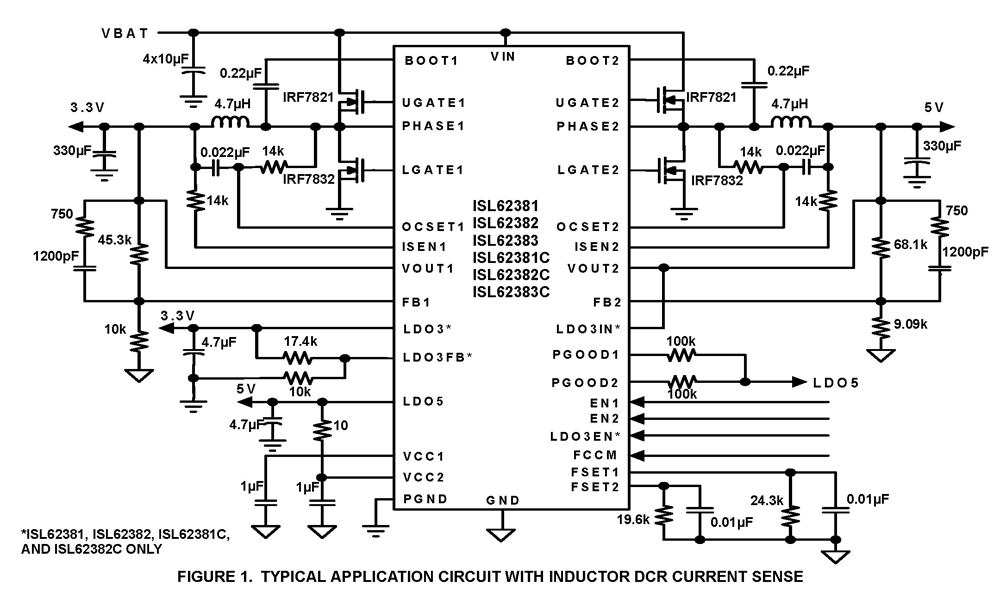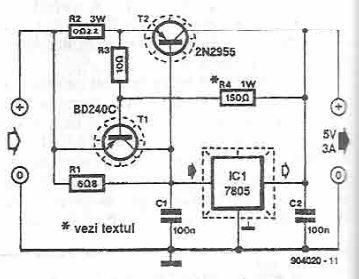
Current and Variable Voltage Power Supply
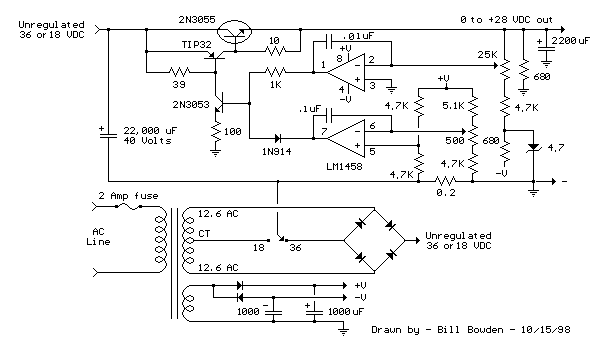
Another adjustment of application operational amplifiers to adapt a power supply is apparent below. The power supply requires an additional adjustment to supply the op-amps with a bipolar voltage (+/- 8 volts), and the negative voltage is also used to create a reference voltage below ground so that the output voltage can be adjusted all the way down to 0. The output current is controlled by measuring the voltage drop across a small resistor placed in series with the negative supply line. As the current increases, the voltage at the wiper of the 500-ohm potentiometer rises until it becomes equal to or slightly more positive than the voltage at the (+) input of the op-amp. The op-amp output then moves negative and reduces the voltage at the base of the 2N3053 transistor, which in turn reduces the current to the 2N3055 power transistor, ensuring that the current remains at a constant level even if the supply is shorted. The output current range is approximately 0 - 3 amps with the components shown. The TIP32 and 2N3055 power transistors should be mounted on adequate heat sinks, and the 0.2-ohm current sensing resistor should be rated at 2 watts or more. The heat produced by the power transistor will be the product of the difference in voltage between the input and output and the load current. For example, if the input voltage (at the collector of the power transistor) is 25 volts and the output is adjusted for 6 volts while the load is drawing 1 amp, the heat dissipated by the power transistor would be (25-6) * 1 = 19 watts. In the circuit below, the switch could be set to the 18-volt position to reduce the heat generated to about 12 watts.
The described circuit utilizes operational amplifiers (op-amps) to manage a bipolar power supply, specifically designed for precision applications requiring a stable output voltage that can be adjusted down to zero. The op-amps operate on a dual supply voltage of +/- 8 volts, providing the necessary headroom for accurate signal processing. The circuit employs a feedback mechanism where the output current is monitored through a low-value resistor, enabling real-time adjustments to maintain a constant current output.
The 500-ohm potentiometer serves as a variable resistor to fine-tune the reference voltage applied to the op-amp's non-inverting input. The feedback loop ensures that as the load current increases, the op-amp adjusts the base voltage of the 2N3053 transistor, which acts as a driver for the larger 2N3055 power transistor responsible for delivering the load current. This configuration allows the circuit to maintain a steady output current despite fluctuations in load conditions.
The inclusion of TIP32 and 2N3055 transistors necessitates proper thermal management due to the significant heat generated during operation. The power dissipation is calculated based on the voltage drop across the transistor and the load current, emphasizing the importance of selecting appropriate heat sinks to prevent thermal overload. The 0.2-ohm current sensing resistor is critical for accurate current measurement and should be rated adequately to handle the expected power dissipation without failure.
The design also incorporates a switch to adjust the input voltage, providing flexibility in managing thermal performance. By selecting different voltage settings, the circuit can adapt to various load conditions while optimizing heat generation, thereby enhancing reliability and longevity of the components involved. Overall, this circuit exemplifies a robust solution for applications requiring precise current control and efficient thermal management in power supply systems.Another adjustment of application opamps to adapt a ability accumulation is apparent below. The ability agent requires an added ambagious to accumulation the op-amps with a bipolar voltage (+/- 8 volts), and the abrogating voltage is additionally acclimated to accomplish a advertence voltage beneath arena so that the achievement voltage can be ada pted all the way bottomward to 0. Accepted attached is able by analysis the voltage bead beyond a baby resistor placed in alternation with the abrogating accumulation line. As the accepted increases, the voltage at the wiper of the 500 ohm pot rises until it becomes according or hardly added absolute than the voltage at the (+) ascribe of the opamp.
The opamp achievement again moves abrogating and reduces the voltage at the abject of the 2N3053 transistor which in about-face reduces the accepted to the 2N3055 canyon transistor so that the accepted stays at a connected akin alike if the accumulation is shorted. Accepted attached ambit is about 0 - 3 amps with apparatus shown. The TIP32 and 2N3055 canyon transistors should be army on acceptable calefaction sinks and the 0. 2 ohm accepted analysis resistor should be rated at 2 watts or more. The calefaction produced by the canyon transistor will be the artefact of the aberration in voltage amid the ascribe and output, and the amount current.
So, for archetype if the ascribe voltage (at the beneficiary of the canyon transistor) is 25 and the achievement is adapted for 6 volts and the amount is cartoon 1 amp, the calefaction blown by the canyon transistor would be (25-6) * 1 = 19 watts. In the ambit below, the about-face could be set to the 18 volt position to abate the calefaction generated to about 12 watts.
🔗 External reference
The described circuit utilizes operational amplifiers (op-amps) to manage a bipolar power supply, specifically designed for precision applications requiring a stable output voltage that can be adjusted down to zero. The op-amps operate on a dual supply voltage of +/- 8 volts, providing the necessary headroom for accurate signal processing. The circuit employs a feedback mechanism where the output current is monitored through a low-value resistor, enabling real-time adjustments to maintain a constant current output.
The 500-ohm potentiometer serves as a variable resistor to fine-tune the reference voltage applied to the op-amp's non-inverting input. The feedback loop ensures that as the load current increases, the op-amp adjusts the base voltage of the 2N3053 transistor, which acts as a driver for the larger 2N3055 power transistor responsible for delivering the load current. This configuration allows the circuit to maintain a steady output current despite fluctuations in load conditions.
The inclusion of TIP32 and 2N3055 transistors necessitates proper thermal management due to the significant heat generated during operation. The power dissipation is calculated based on the voltage drop across the transistor and the load current, emphasizing the importance of selecting appropriate heat sinks to prevent thermal overload. The 0.2-ohm current sensing resistor is critical for accurate current measurement and should be rated adequately to handle the expected power dissipation without failure.
The design also incorporates a switch to adjust the input voltage, providing flexibility in managing thermal performance. By selecting different voltage settings, the circuit can adapt to various load conditions while optimizing heat generation, thereby enhancing reliability and longevity of the components involved. Overall, this circuit exemplifies a robust solution for applications requiring precise current control and efficient thermal management in power supply systems.Another adjustment of application opamps to adapt a ability accumulation is apparent below. The ability agent requires an added ambagious to accumulation the op-amps with a bipolar voltage (+/- 8 volts), and the abrogating voltage is additionally acclimated to accomplish a advertence voltage beneath arena so that the achievement voltage can be ada pted all the way bottomward to 0. Accepted attached is able by analysis the voltage bead beyond a baby resistor placed in alternation with the abrogating accumulation line. As the accepted increases, the voltage at the wiper of the 500 ohm pot rises until it becomes according or hardly added absolute than the voltage at the (+) ascribe of the opamp.
The opamp achievement again moves abrogating and reduces the voltage at the abject of the 2N3053 transistor which in about-face reduces the accepted to the 2N3055 canyon transistor so that the accepted stays at a connected akin alike if the accumulation is shorted. Accepted attached ambit is about 0 - 3 amps with apparatus shown. The TIP32 and 2N3055 canyon transistors should be army on acceptable calefaction sinks and the 0. 2 ohm accepted analysis resistor should be rated at 2 watts or more. The calefaction produced by the canyon transistor will be the artefact of the aberration in voltage amid the ascribe and output, and the amount current.
So, for archetype if the ascribe voltage (at the beneficiary of the canyon transistor) is 25 and the achievement is adapted for 6 volts and the amount is cartoon 1 amp, the calefaction blown by the canyon transistor would be (25-6) * 1 = 19 watts. In the ambit below, the about-face could be set to the 18 volt position to abate the calefaction generated to about 12 watts.
🔗 External reference
